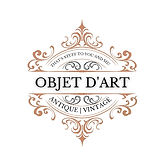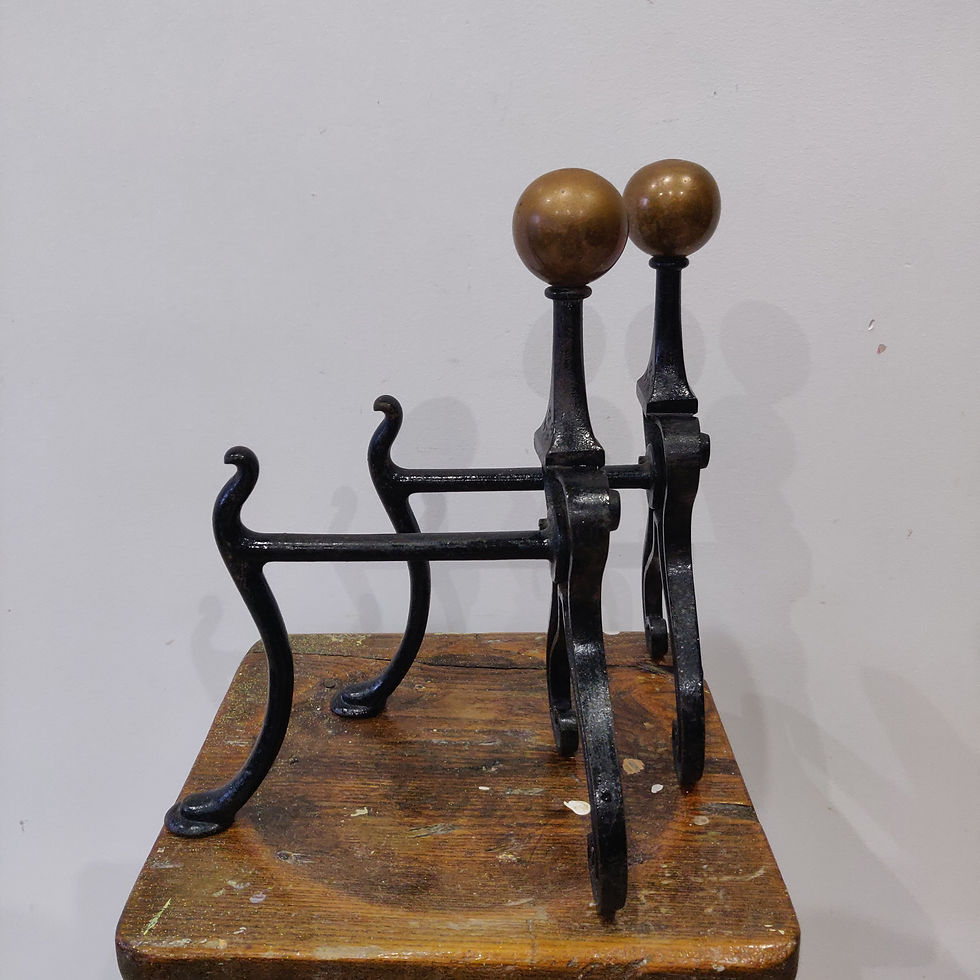Edwardian “Early Bird Inn” Village Scene Tea Caddy (c.1910–1925)
-
Step back into Edwardian England with this charming early 20th-century hinged-lid tea tin, beautifully decorated with a lithographed village scene. The design features half-timbered houses, horses, and a rider pausing outside The Early Bird Inn — a quaint touch that captures the spirit of the English countryside.
-
Although unbranded, tins like this were typically produced for grocers and tea merchants by some of Britain’s leading tin manufacturers. The Early Bird name appears as a pub sign within the artwork, not as a tea brand — part of the romantic narrative scene that made such tins so beloved in homes across Britain.
The tin’s rectangular form, rounded corners, and domed hinged lid are typical of tea caddies from around 1910–1925. Despite areas of surface wear and fading, the original chromolithographed colours — rich reds, ochres, and greens — remain visible beneath the patina, giving the piece a wonderfully authentic timeworn charm.
Dimensions: approx. 15 cm tall × 10 cm × 8 cm
-
Condition: Age-related wear and fading consistent with use; hinge intact.
-
Material: Lithographed tinplate
---
🏛️ Historical Note: Barringer, Wallis & Manners and the Golden Age of British Tinware
-
During the late Victorian and Edwardian eras, the art of lithographed tin printing reached its peak in Britain. Among the most celebrated producers was Barringer, Wallis & Manners Ltd., founded in Mansfield, Nottinghamshire in 1890. The firm became renowned worldwide for its exquisitely detailed chromolithographic work, supplying decorative tins to leading brands such as Huntley & Palmers, Cadbury, and Fry’s.
-
These tins were more than packaging — they were miniature works of art, designed to be reused in the home long after the tea or biscuits were gone. Romantic street scenes, rustic cottages, and coaching inns were favourite motifs, embodying an idealised vision of British village life.
-
This Early Bird Inn tin fits perfectly into this tradition. Its intricate architectural imagery, narrative composition, and painterly finish reflect the craftsmanship and storytelling that made Edwardian packaging both beautiful and enduring.
---
💷 Collector’s Insight
Unbranded tins with such detailed lithography are increasingly sought after for their folk-art appeal. This example remains a decorative testament to Britain’s golden age of domestic design — a nostalgic keepsake from the era when even everyday objects were made to delight the eye.
Edwardian “Early Bird Inn” Village Scene Tea Caddy (c.1910–1925)
Dimensions:
15cm x 10cm x 8cm
Collectors Insight:
Unbranded tins with such detailed lithography are increasingly sought after for their folk-art appeal. This example remains a decorative testament to Britain’s golden age of domestic design — a nostalgic keepsake from the era when even everyday objects were made to delight the eye.



















































































